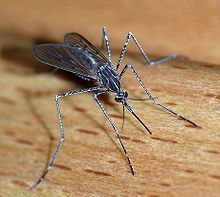The Intervention Cycle

Leon Wieseltier, plumping for war per usual, asks: "Did our inaction in Rwanda reduce the frequency of malaria in Africa?"
That seems like a terrible way of looking at things. The United States of America traditionally didn't maintain a large standing military force. But in order to fight the Cold War, we created one. This national security establishment is a significant burden on the public purse and it does, in the aggregate, crowd out other possible public sector initiatives including international public health. It's true that once the military capability actually exists, the short-term cost of deploying it often looks low. This is Madeleine Albright's challenge to Colin Powell: What's the point of having this magnificent military if you're never going to use it. But if you do use it, then non-use as a rationale for reduced expenditures goes away. And that, again, crowds out other possible public sector initiatives including international public health.
Yet at the end of the day, promiscuous use of lethal violence seems like a very strange long-term strategy for promoting humanitarian outcomes. It's neither true that promiscuous use of lethal violence is a cost-effective means of humanitarianism nor is it true that America's capacity for lethal violence is primarily deployed for humanitarian purposes.


Matthew Yglesias's Blog
- Matthew Yglesias's profile
- 72 followers



